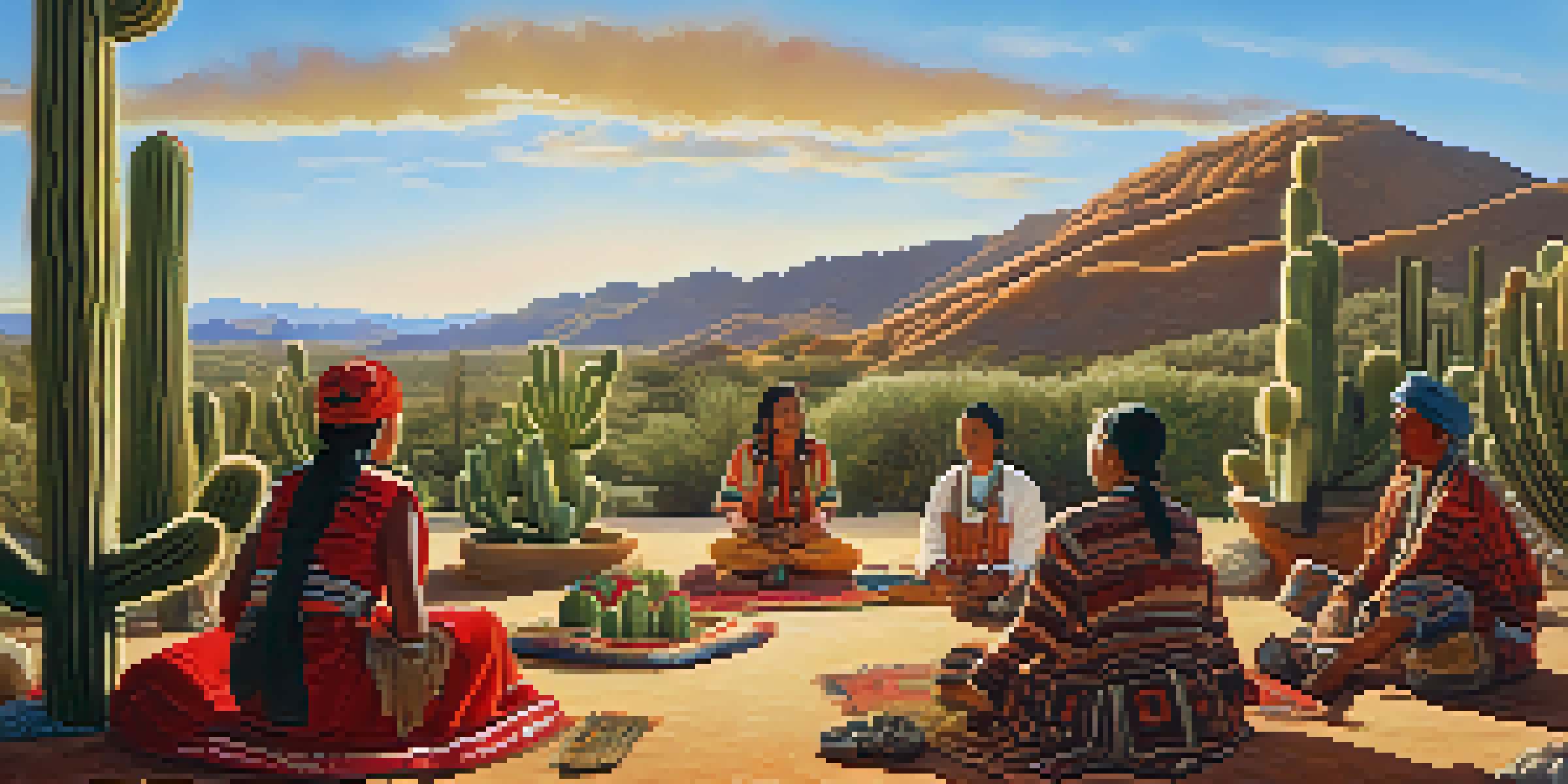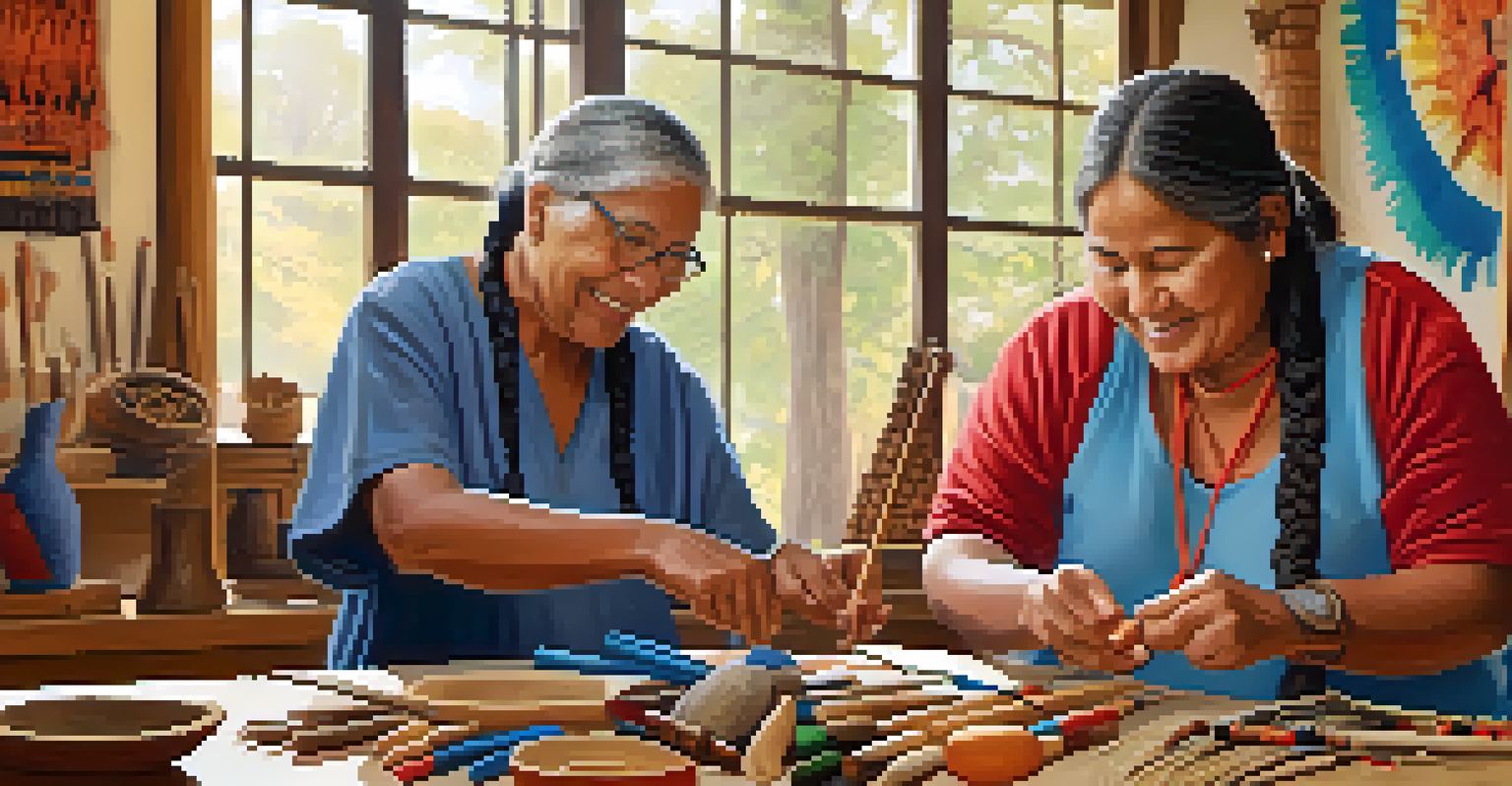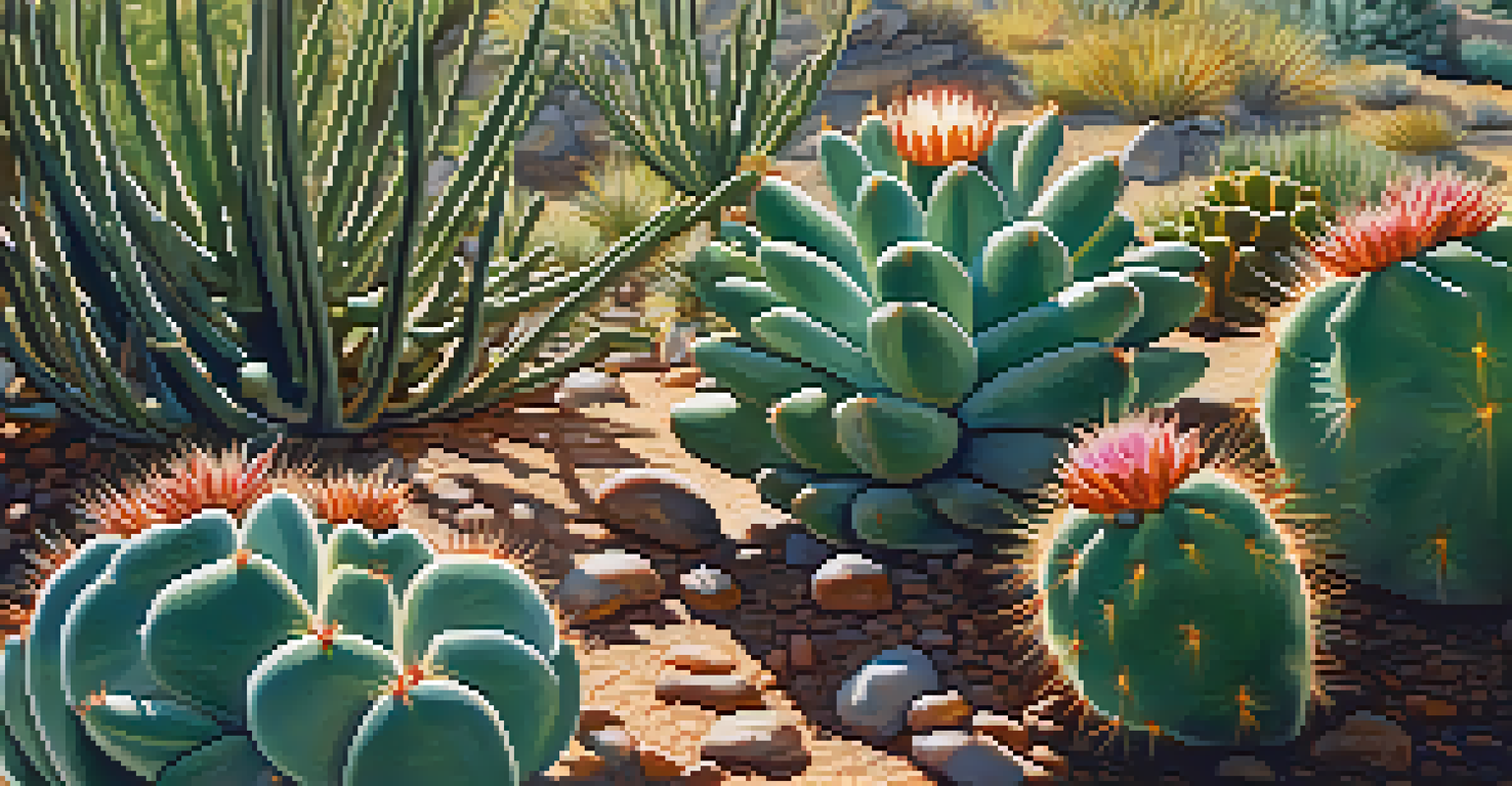Cultural Preservation and Peyote in Indigenous Activism

Understanding Cultural Preservation in Indigenous Communities
Cultural preservation refers to the efforts made to maintain and promote the traditions, languages, and practices unique to a community. For Indigenous peoples, this means safeguarding their rich heritage against the forces of globalization and assimilation. These communities often focus on storytelling, traditional arts, and ceremonies to keep their culture vibrant and alive.
Indigenous peoples view their culture not just as a collection of practices but as a living entity that connects them to their ancestors and the land.
At the heart of this preservation are the values and spiritual beliefs that define Indigenous identities. Many Indigenous communities view their culture not just as a collection of practices but as a living entity that connects them to their ancestors and the land. This deep-rooted connection fosters resilience against external pressures that threaten their way of life.
Moreover, the act of preserving culture can also be a form of resistance. By maintaining their traditions, Indigenous groups assert their rights and identities, pushing back against historical injustices and contemporary marginalization. In this context, cultural preservation becomes a powerful tool for social and political activism.
The Significance of Peyote in Indigenous Traditions
Peyote, a small cactus native to the southwestern United States and northern Mexico, holds immense spiritual significance for many Indigenous peoples. Traditionally used in religious ceremonies, peyote is believed to facilitate communication with the spirit world, providing guidance and healing. Its consumption is often part of the Native American Church's rituals, which blend Indigenous beliefs with Christian elements.

For many Indigenous communities, peyote is more than just a plant; it's a sacred medicine that embodies their cultural heritage. The rituals surrounding its use are steeped in symbolism and tradition, reinforcing communal bonds and shared beliefs. This connection to peyote is a crucial aspect of their cultural identity, making its preservation vital.
Cultural Preservation is Vital
Indigenous communities engage in cultural preservation to safeguard their traditions, languages, and practices against globalization and assimilation.
However, the significance of peyote extends beyond spiritual practices. It also serves as a focal point for broader discussions about land rights, sovereignty, and the preservation of Indigenous cultures. Activists argue that protecting peyote habitats is essential not only for cultural reasons but also as a means of asserting their rights over traditional lands.
Indigenous Activism and the Fight for Rights
Indigenous activism has gained momentum over recent decades, with many leaders advocating for the rights of their communities. This activism often intersects with cultural preservation efforts, as protecting Indigenous ways of life is central to these movements. Activists strive to bring attention to issues like land rights, environmental justice, and the preservation of sacred practices, including peyote use.
The preservation of cultural practices is not just about defending the past; it is about envisioning a sustainable future.
Through protests, legal battles, and grassroots organizing, Indigenous activists are challenging policies that threaten their cultures and livelihoods. They often emphasize the importance of traditional knowledge and practices, arguing that these are critical for the health of both the community and the planet. Their efforts are not just about defending the past; they are also about envisioning a sustainable future.
Moreover, Indigenous activists frequently collaborate with non-Indigenous allies to amplify their voices and concerns. This solidarity can lead to broader societal changes, as more people become aware of the struggles Indigenous communities face. By linking cultural preservation with social justice, these activists create a powerful narrative that resonates with many.
Legal Challenges Surrounding Peyote Use
Despite its cultural significance, the legal status of peyote has been contentious. In the United States, peyote is classified as a Schedule I controlled substance, which complicates its use in religious ceremonies. Indigenous communities have fought for exemptions that recognize their traditional practices, arguing that the criminalization of peyote infringes upon their rights.
The legal battles surrounding peyote are emblematic of the broader struggle for Indigenous rights. Courts have recognized the importance of religious freedom, but the challenges remain complex. Activists continue to lobby for legal protections that would allow for the safe and sacred use of peyote without fear of persecution.
Peyote's Spiritual and Cultural Role
Peyote serves as a sacred medicine in Indigenous traditions, symbolizing cultural identity and connecting communities to their heritage.
In recent years, there have been some successes in this area, with certain states enacting laws to protect Indigenous peyote use. However, the fight is far from over, as these protections vary widely and are often subject to political change. The ongoing struggle highlights the need for greater awareness and respect for Indigenous cultural practices.
Cultural Revival Movements and Their Impact
In response to the historical erasure of their cultures, many Indigenous communities are engaging in cultural revival movements. These initiatives aim to reclaim and revitalize traditional practices, languages, and ceremonies, including those involving peyote. Such movements foster a sense of pride and identity among community members, especially the youth, who are increasingly becoming involved.
Cultural revival not only strengthens community ties but also empowers individuals to take pride in their heritage. By learning about their traditions and engaging in ceremonies, individuals can connect more deeply with their ancestors and the land. This renewal of cultural practices often leads to improved mental health and well-being within the community.
Moreover, these revival movements can serve as a platform for activism. By showcasing their culture and traditions, Indigenous communities can raise awareness about the issues they face, from environmental degradation to legal challenges. This visibility can attract allies and support, amplifying their voices in the broader societal conversation.
The Role of Education in Cultural Preservation
Education plays a pivotal role in the preservation of Indigenous cultures. By integrating traditional knowledge and practices into educational curricula, communities can ensure that future generations understand and appreciate their heritage. This approach not only fosters pride but also equips young people with the tools they need to navigate the complexities of modern society.
Culturally relevant education can take many forms, from language immersion programs to workshops on traditional crafts and practices. Such initiatives help bridge the gap between generations, allowing elders to pass down their knowledge and experiences. This transfer of knowledge is crucial for maintaining cultural continuity.
Education Empowers Cultural Continuity
Integrating traditional knowledge into education helps future generations appreciate their heritage and fosters pride within Indigenous communities.
Additionally, education about Indigenous cultures in mainstream institutions can promote understanding and respect among non-Indigenous people. By fostering a greater awareness of Indigenous histories and perspectives, educational initiatives can help dismantle stereotypes and combat prejudice. This broader understanding is essential for creating a more inclusive society.
The Future of Peyote and Indigenous Cultural Practices
The future of peyote and Indigenous cultural practices is intertwined with ongoing advocacy and activism. As Indigenous communities continue to fight for their rights and the preservation of their traditions, the significance of peyote remains a central theme. The plant's role in spiritual ceremonies ensures that it will continue to be a focal point for cultural identity and resilience.
However, challenges such as habitat loss and climate change threaten peyote populations, making conservation efforts critical. Indigenous activists are at the forefront of these initiatives, advocating for sustainable practices that respect both the land and their cultural heritage. Their efforts underscore the importance of protecting not just the plant, but the entire ecosystem that supports it.

Looking ahead, the collaboration between Indigenous communities and allies will be essential in shaping policies that honor and protect their cultural practices. By fostering understanding and respect, there is hope for a future where peyote and Indigenous traditions are not only preserved but celebrated as vital parts of the cultural landscape.